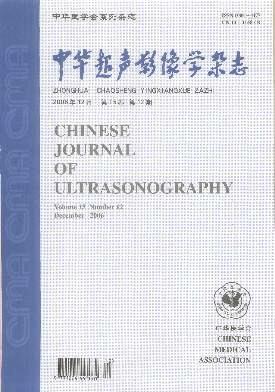The feasibility of 3D printing aortic root model by three dimensional transesophageal echocardiography data: a preliminary study compared with CT
Q4 Medicine
引用次数: 0
Abstract
Objective To preliminary explore the feasibility of three-dimensional transesophageal echocardiography (3D-TEE) as images data source for 3D printing model by comparing the 3D-TEE with CT of the aortic root Digital Imaging and Communications in Medicine(DICOM) data into 3D printing models respectively. Methods Fifteen patients who underwent surgical aortic valve replacement in the hospital were enrolled, and the aortic root 3D-TEE and CT DICOM data were obtained in perioperative. The images were imported into Mimics software to generate digital model standard tessellation language file, and to print the aortic root models by 3D printer. The structural morphology of both 3D-TEE and CT models were qualitatively evaluated respectively. The aortic annular area, perimeter, maximal diameter and minimal diameter of the original data, digital model, model and aortic valve replacement were quantitatively evaluated, and the consistency of each parameter value were analyzed. The mean diameter of 3D-TEE and CT model were calculated. The correlation of mean diameter with the number of replacement was analyzed. Results ①Both 3D-TEE and CT images data were successfully printed into 3D models, and the positive rate of aortic valve structure were 93.3% (14/15) and 80.0% (12/15) respectively. ②The measured values of the aortic annular 3D-TEE and digital model were smaller than CT, CTdigital model and replacement (P 0.95, P<0.05). Conclusions 3D printing aortic root model based on 3D-TEE image data is of high feasibility. Key words: Echocardiography, three-dimensional, transesophageal; Aortic root; Valve; 3D printing三维经食管超声心动图数据3D打印主动脉根部模型的可行性——与CT对比的初步研究
目的通过比较三维经食管超声心动图(3D-TEE)和CT将主动脉根数字成像与医学通信(DICOM)数据分别转换为3D打印模型,初步探讨3D-TEE作为3D打印模型图像数据源的可行性。方法对15例在医院行主动脉瓣置换术的患者进行围手术期主动脉根部3D-TEE和CT DICOM数据采集。将图像导入Mimics软件,生成数字模型标准镶嵌语言文件,并通过3D打印机打印主动脉根部模型。分别对3D-TEE和CT模型的结构形态进行了定性评价。对原始数据、数字模型、模型和主动脉瓣置换术的主动脉环面积、周长、最大直径和最小直径进行了定量评估,并分析了各参数值的一致性。计算3D-TEE和CT模型的平均直径。分析了平均直径与置换次数的相关性。结果①3D-TEE和CT图像数据均成功打印成三维模型,主动脉瓣结构的阳性率分别为93.3%(14/15)和80.0%(12/15)主动脉环3D-TEE和数字模型的测量值均小于CT、CT数字模型和置换术(P 0.95,P<0.05)。关键词:超声心动图,三维,经食道;主动脉根部;阀门;3D打印
本文章由计算机程序翻译,如有差异,请以英文原文为准。
求助全文
约1分钟内获得全文
求助全文
来源期刊

中华超声影像学杂志
Medicine-Radiology, Nuclear Medicine and Imaging
CiteScore
0.80
自引率
0.00%
发文量
9126
期刊介绍:
 求助内容:
求助内容: 应助结果提醒方式:
应助结果提醒方式:


